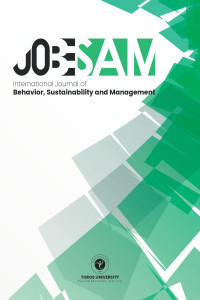Three-Dimensional Path Planning of UAVs in Complex Urban Terrains: A Case Study of Emergency Medicine Delivery in Shanghai (China)
3D route planning, emergency, geographic information system, heuristic algorithm, medical emergency;, unmanned aerial vehicle
Three-Dimensional Path Planning of UAVs in Complex Urban Terrains: A Case Study of Emergency Medicine Delivery in Shanghai (China)
emergency, geographic information system, heuristic algorithm, 3D route planning, unmanned aerial vehicle,
___
- Choi D S, Hong K J, Shin S D et al. (2021) Effect of topography and weather on delivery of automatic electrical defibrillator by drone for out-of-hospital cardiac arrest. Scientific Reports, 11(1): 1-8.
- Dorigo M, & Blum C. (2005) Ant colony optimization theory: A survey. Theoretical Computer Science, 344(2-3): 243-278.
- Hirsch M J, Ortiz-Pena H, & Sudit M. (2011) Decentralized cooperative urban tracking of multiple ground targets by a team of autonomous UAVs. 14th International Conference on Information Fusion. IEEE, 1-7.
- Khan S I, Qadir Z, Munawar H S et al. (2021) UAVs path planning architecture for effective medical emergency response in future networks. Physical Communication, 47: 101337.
- Ling, G., & Draghic, N. (2019). Aerial drones for blood delivery. Transfusion, 59(S2), 1608-1611.
- Marques, M. M., Gatta, M., Barreto, M., Lobo, V., Matos, A., Ferreira, B., ... & Marques, F. (2018, May). Assessment of a Shallow Water Area in the Tagus Estuary Using Unmanned Underwater Vehicle (or AUVs), Vector-Sensors, Unmanned Surface Vehicles, and Hexacopters – REX'17. In 2018 OCEANS-MTS/IEEE Kobe Techno-Oceans (OTO) IEEE. (pp. 1-5).
- Rosner, D., Trifu, C., Tranca, C., Vasilescu, I., & Stancu, F. (2018, September). Magnetic field sensor for UAV power line acquisition and tracking. In 2018 17th RoEduNet Conference: Networking in Education and Research (RoEduNet). IEEE, 1-5.
- Saeed F, Mehmood A, Majeed M F et al. (2021) Smart delivery and retrieval of swab collection kit for COVID-19 test using autonomous Unmanned Aerial Vehicles. Physical Communication, 48: 101373.
- Shanghai Municipal Health Commission. Daily Reports .https://wsjkw.sh.gov.cn/yqtb/index.html.
- Wang M, Voos H, & Su D. (2018) Robust online obstacle detection and tracking for collision-free navigation of multirotor uavs in complex environments. 2018 15th International Conference on Control, Automation, Robotics and Vision (ICARCV). IEEE, 1228-1234.
- Yayın Aralığı: Yılda 2 Sayı
- Başlangıç: 2023
- Yayıncı: Toros Üniversitesi
Zeynep ERDOĞAN, İsmail Çağrı KILIÇ, Yasin AFŞAR, Arzum BÜYÜKKEKLİK
Sürdürülebilir Ulaşım İle Lojistik Merkez Yer Seçimi
Burçin PAÇACI, Serpil EROL, Kürşat ÇUBUK
Türkiye'de Kamyon Müfrezesi için Müfreze Oluşturma Merkezi Konumunun Optimizasyonu
AIS VE TİCARET VERİLERİ KULLANILARAK SERA GAZI EMİSYONU VE EĞİLİM TAHMİNİ
Thuta Kyaw WİN, Daisuke WATANABE, Shigeki TORIUMI
LOJİSTİK SEKTÖRÜNDE PERSONEL SEÇİMİ İÇİN ÇOK KRİTERLİ KARAR VERME TEKNİĞİ YAKLAŞIMI: PSI ÖRNEĞİ
COVID-19 Pandemisi Sırasında Atmosferik Etkiler Üzerine Bir Analiz: Bir Ro-Ro Limanı Örneği
Blockchain Teknolojisi ve Sürdürülebilir Lojistik: Döngüsel Ekonomi Entegrasyonu
ÜÇ BOYUTLU AĞIRLIK MERKEZİ TESPİTİNE DAYALI MAKSİMUM YANAL KUVVETLE DEVRİLME ÖNLEME
